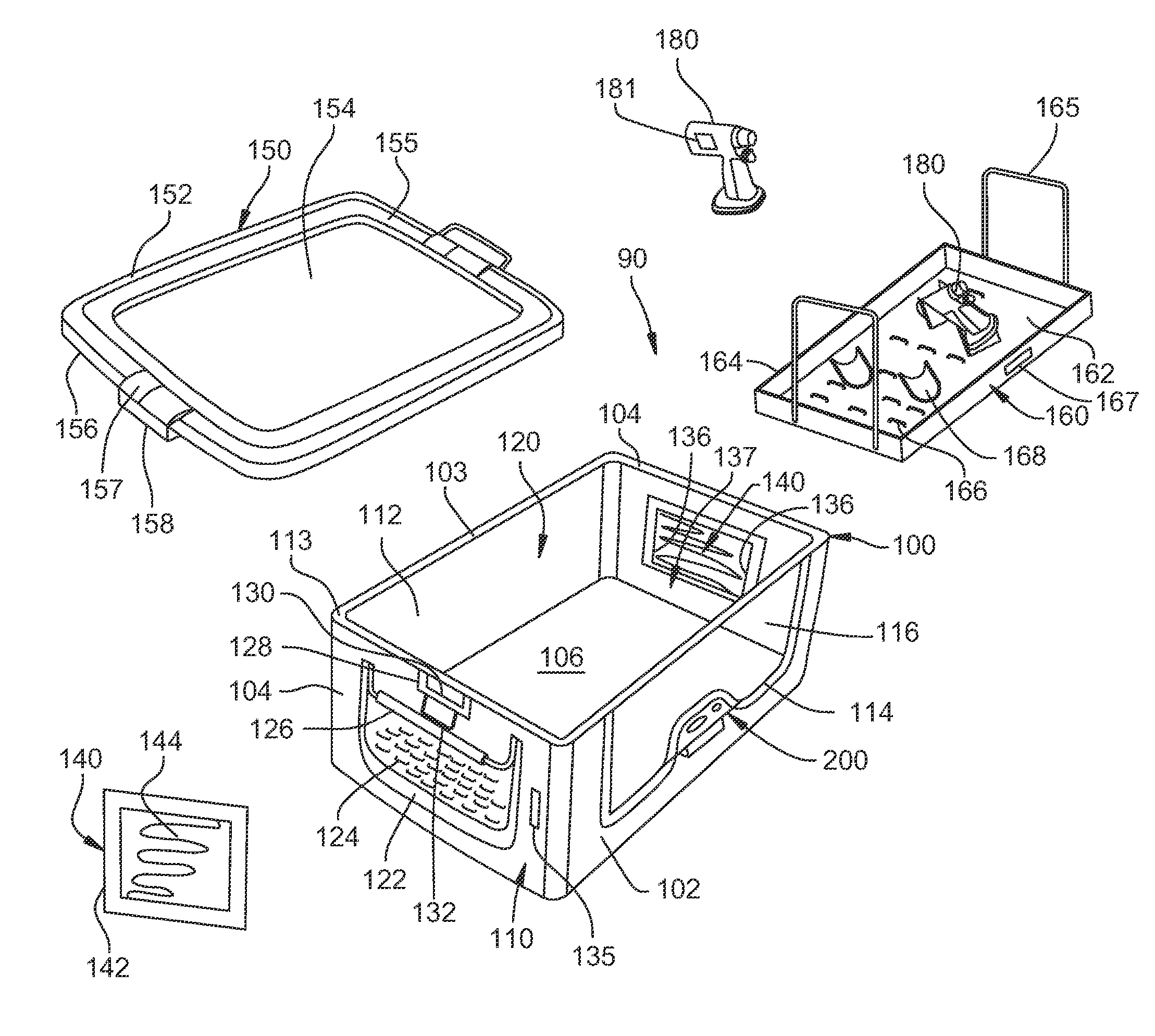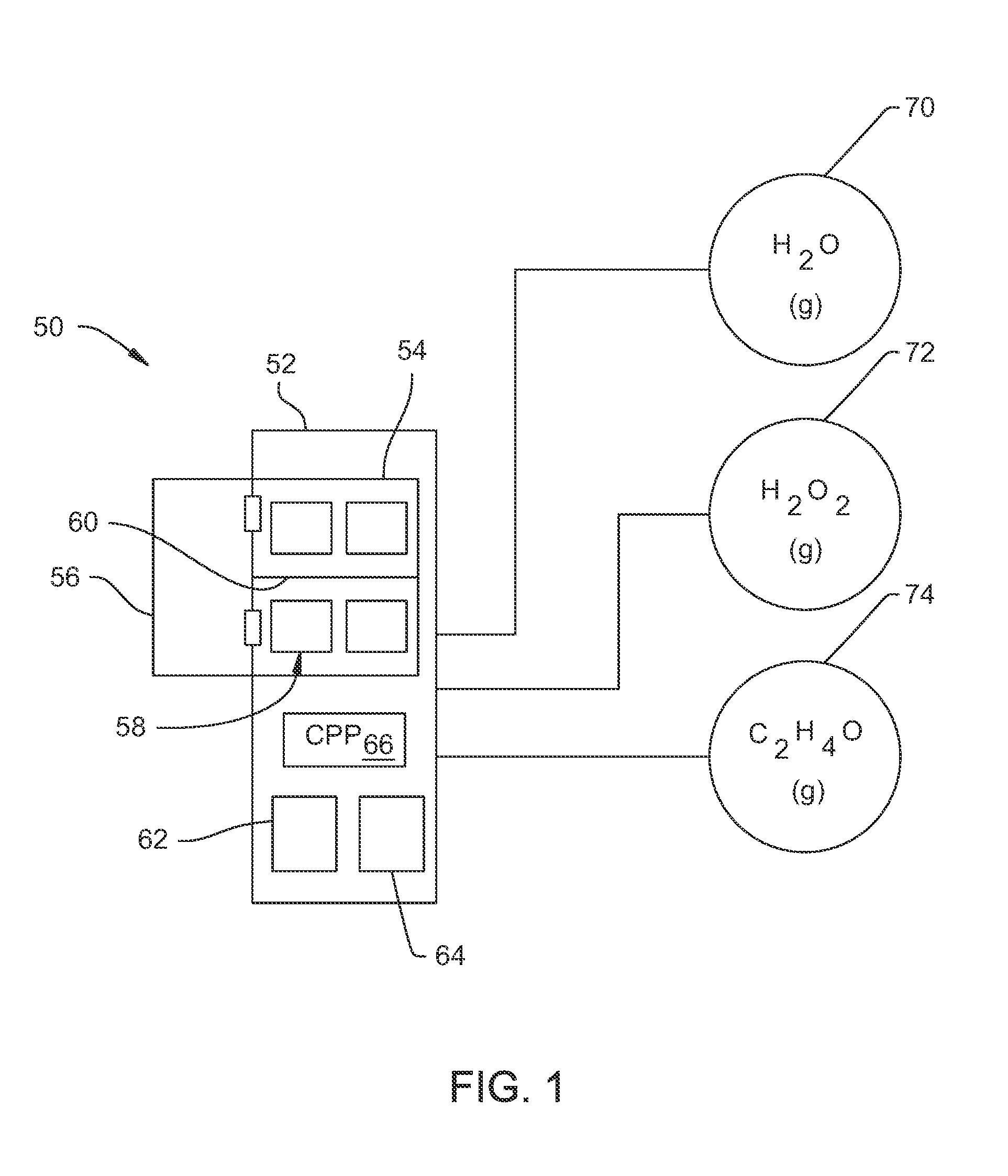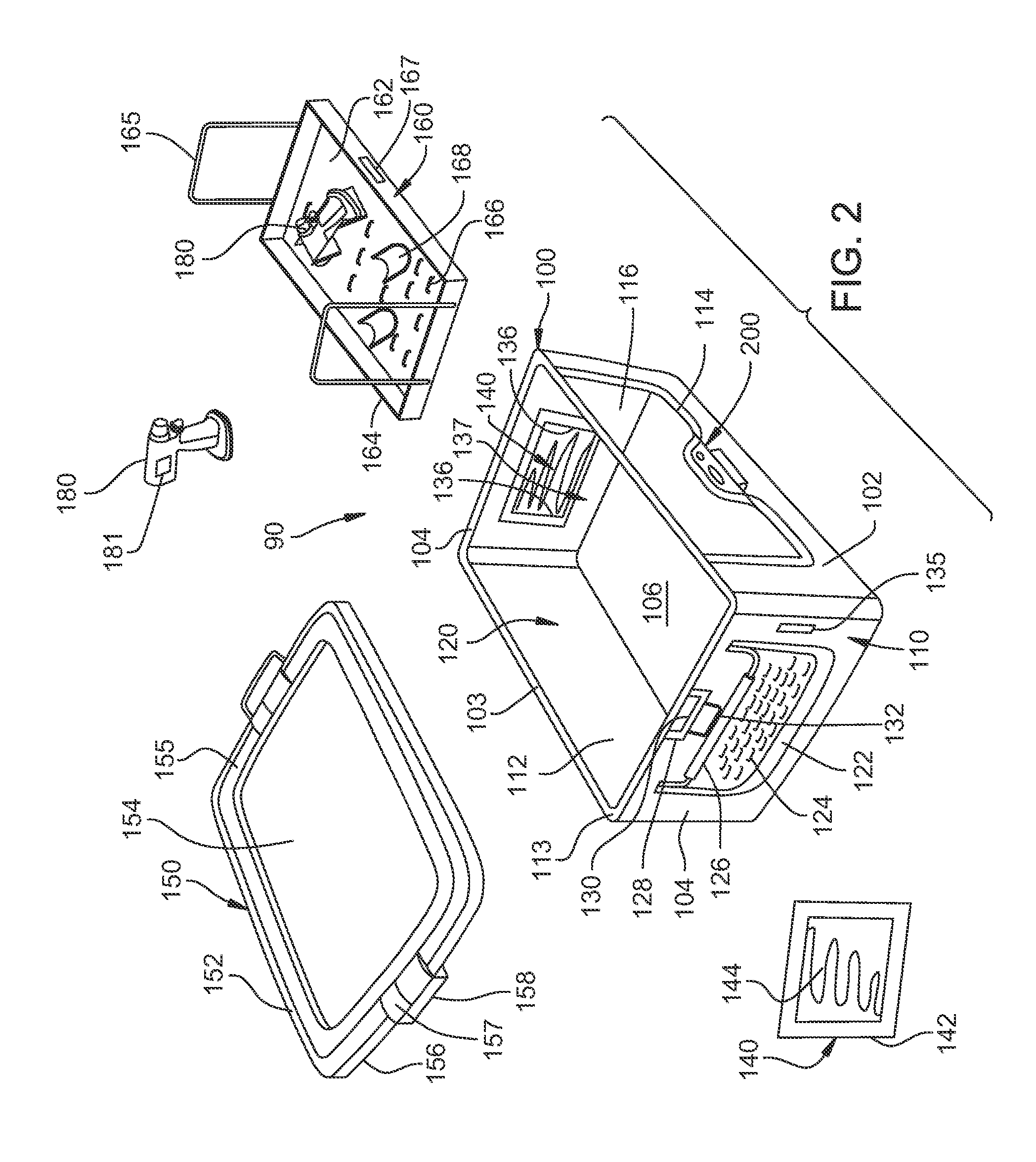Sterilization container capable of providing an indication regarding whether or not surgical instruments sterilized in the container were properly sterilized
a sterilization container and container technology, applied in the direction of instruments, disinfection, lavatory sanitory, etc., can solve the problems of unfavorable processing of surgical instruments, delay in scheduling and/or other adverse disruptions, and inability to prevent microorganisms from entering the container
- Summary
- Abstract
- Description
- Claims
- Application Information
AI Technical Summary
Benefits of technology
Problems solved by technology
Method used
Image
Examples
first container embodiment
II. First Container Embodiment
[0102]Turning to FIG. 2, a container assembly 90 of a first embodiment of this invention is illustrated. Container assembly 90 includes a container 100 that is generally rectangular in shape and is defined by an opposed spaced apart planar front panel 102, a planar rear panel 103 and a pair of opposed spaced apart planar side panels 104. Panels 102 and 103 are oriented orthogonal to panels 104. A planar bottom panel 106 is perpendicular to panels 102, 103 and 104 and forms the bottom of container 100. An interior cavity 120 is defined by panels 102, 103, 104 and 106 within container 100. Container 100 has outer surfaces 110, inner surfaces 112 and an upper peripheral rim 113. Container 100 can be formed from materials such as stamped or deep drawn aluminum, stainless steel, plastic or other suitable materials.
[0103]Front panel 102 has a window or opening 114 defined therein. Opening 114 is covered by a panel 116 formed from a material that is transparen...
second container embodiment
III. Second Container Embodiment
[0122]FIG. 5 illustrates a container assembly 300 of a second embodiment of the present invention. In FIG. 5, common reference numbers to like items in FIG. 2 have been given the same reference number. Container assembly 300 includes a container 302 that is generally rectangular in shape. Container 302 is similar to container 100; however, some features of container 100 have been omitted and other features have been added. For example, container 302 does not include any holes 124 or a filter assembly 140.
[0123]Electronic module 200 is mounted to front panel 102. Electronic sensor module 200 contains electronic components and sensors that measure environmental characteristics within container 302 and determine if required conditions have been met to insure sterility of the contents of container 302.
[0124]Container 302 further includes four rounded shoulders 304. Each of shoulders 304 is located at an interior corner 306 of container 302 and extends alo...
fifth container embodiment
VI. Fifth Container Embodiment
[0171]Referring to FIG. 9A, a container assembly 600 of a fifth embodiment of the present invention is shown. Container assembly 600 includes a version of container 402. The version of container 402 of FIG. 9A is the same as the previously described container 402 of FIG. 7A except that opening 418 is not present. Also magnets 624 are mounted to interior facing vertical side surfaces of side panels 405 and 406 slightly below rim 413.
[0172]With additional reference to FIG. 9B, cover 650 is used to cover and enclose container 402. Cover 650 includes a generally rectangular shaped panel 652. Cover 650 can be formed from materials such as stamped aluminum or other suitable materials. Cover 650 has an inner surface 651, an outer surface 654 and opposed ends 653. An array of holes 655 are defined in and extend through panel 652. Holes 655 allow sterilant to enter and leave container 402 during sterilization processing. An outer peripheral wall 656 extends down...
PUM
 Login to View More
Login to View More Abstract
Description
Claims
Application Information
 Login to View More
Login to View More - R&D
- Intellectual Property
- Life Sciences
- Materials
- Tech Scout
- Unparalleled Data Quality
- Higher Quality Content
- 60% Fewer Hallucinations
Browse by: Latest US Patents, China's latest patents, Technical Efficacy Thesaurus, Application Domain, Technology Topic, Popular Technical Reports.
© 2025 PatSnap. All rights reserved.Legal|Privacy policy|Modern Slavery Act Transparency Statement|Sitemap|About US| Contact US: help@patsnap.com



